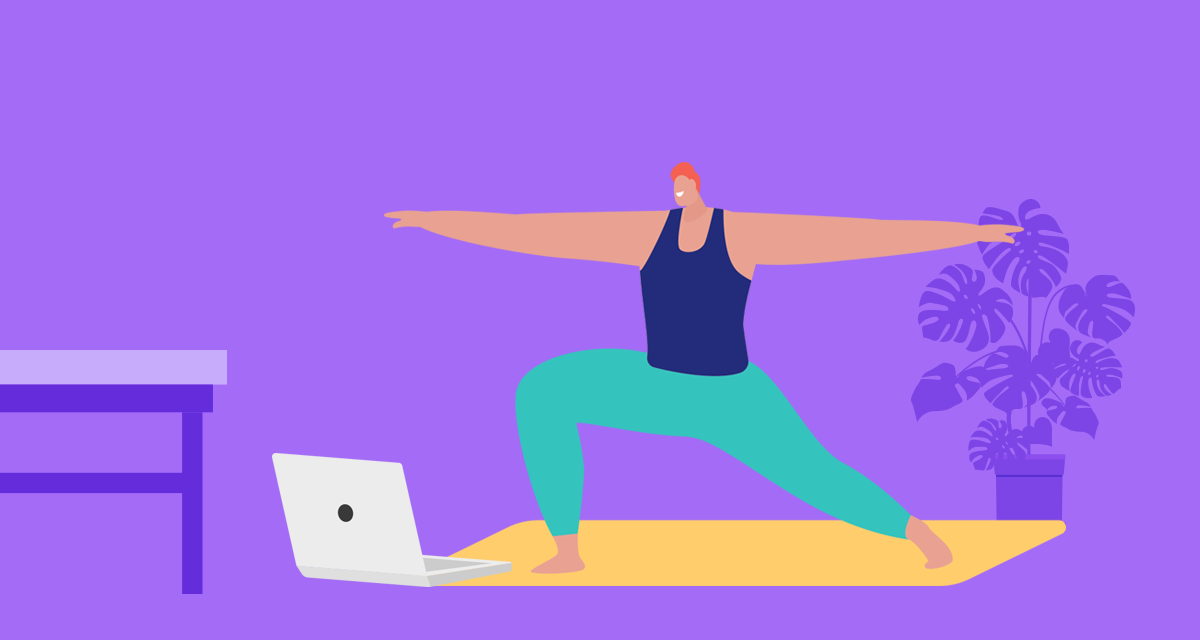The COVID-19 outbreak has forced the closure of gyms across the globe, meaning that the fitness industry has changed dramatically over the past couple of weeks. As gyms and fitness studios are not able to run their usual face-to-face classes, many companies are using technology to offer live-streaming and on-demand exercise classes as a way to bring their members together and help them keep active.
Here are a few of our best practices for creating the perfect atmosphere in an online fitness class that will motivate and inspire your audience.
How to Set Up Your Studio
Delivering a high-quality experience is less about fancy equipment and more about finding the best lighting, camera angle, and sound options for your space. If you have a camera phone and just a few accessories, you can produce professional-looking results that users will love.
Clean Backdrop
Clear away furniture and remove artwork and personal belonging while shooting. You also want to clean the area and eliminate anything that could be distracting. To create a sense of order and consistency, use the same room for all the classes.
Lighting
Your class needs to see you follow along with the exercise program. Try to use a 12-inch LED ring light kit to brighten the set, or incorporate natural lighting from outside. If you use light from a window, try to shoot on a sunny day in the late morning or early afternoon—otherwise, the lighting could vary if there are clouds or the sun changes position in the sky.
Camera Stability
Avoid shaky videos by using a tripod, or get creative by stacking books and propping up your phone.
Acoustics
The sound quality can be the hardest part of setting up a home studio. To keep the sound from echoing, you need to add soft materials to absorb soundwaves. Position cushions, pillows, or blankets around the set off the camera. You can also produce better-quality sound by using two devices: position the camera about four or five feet away and then use a smaller separate device for recording the sound. Whether you use a phone, headset, or mic won’t make a significant difference, as long as you articulate clearly.
A Note on Music
An excellent workout playlist gets everyone motivated, but using music you don’t have the rights too could lead to problems. While you may be an individual subscriber to a streaming service such as Spotify, that doesn’t mean you can stream songs for your class.
Encourage participants to use their own playlists during the workout or consider using royalty-free music.
Choose the Right Outfit
You should wear tight clothing so users can see the movements clearly and copy your form. We recommend wearing patterns and colours that won’t look distracting on screen.
Test, Test, Test!
Before going live or hitting record, test everything. Do a trial run and ask a friend to tune-in to ensure that your camera’s stable, the lighting is good, your sound is on. It’s also a good idea to run a free internet speed test to make sure you have a strong connection.
What’s the Secret to Running an Online Fitness Class Like a Pro?
Communicate, Communicate, Communicate
While you may not be able to give the same kind of feedback as you normally would in-studio, so it is really important that you communicate clearly with your audience.
- Class Description: When you start promoting your class, it’s important to set clear expectations for members. Explain the length of the class, the time and what type of equipment they’ll need.
- Live Settings: Most streaming services let you choose a different set of permissions for audience members. Depending on the size of your class, you might want to consider muting attendees. Otherwise, you might be forced to contend with feedback, sound issues, or noise disruptions from audience members in the middle of your routine. If you decide to remove the mic option for attendees, let them know how to contact the instructor for questions—for example, through a chat feature or via text.
- Welcome Message: When you host a virtual class, participants will probably log in at different times throughout the session. To keep everyone on the same page, write a welcome message that displays in the video description or as a pop-up screen. In your welcome message, briefly describe the class and explain the video, audio, and chat features.
Lead your Community
Bring everything you have to the table and tell people how amazing they are just for showing up. In these uncertain times, having people motivated and engaged is necessary. Before starting a class it takes 5 minutes to have an informal conversation with all the users if they want to ask doubts, it’s a good way to get close and keep connected.

